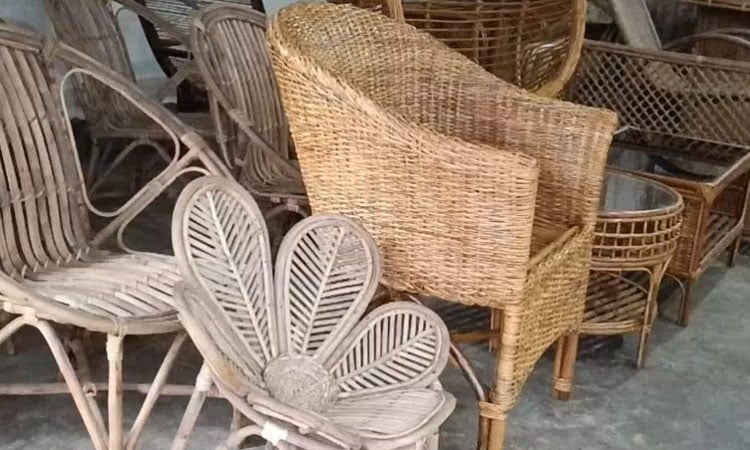News Flash
News Flash

By Belal Rizvi
MADARIPUR, Oct 29, 2025 (BSS) - The once-flourishing rattan industry of Madaripur district is on the verge of extinction as plastic and steel products are dominating the market.
Once considered a symbol of pride and craftsmanship, rattan-made furniture and decorative items are fast disappearing from local homes and shops.
Local artisans said that rising raw material costs, scarcity of quality cane, and reduced customer demand have made rattan production unprofitable. Many who once relied on this traditional craft for their livelihoods are now shifting to other occupations.
Shibchar-based craftsman Bellal Bepari, who has been making rattan furniture for decades, continues to produce magazine racks, trolleys, easy chairs, dining sets, and baby cots in his workshop near the Madaripur Public Library. However, his business is struggling.
“Earlier, many buyers used to come, but now sales have fallen by half,” Bepari said. “It’s becoming too expensive to buy cane from the hilly areas and continue working. Without government support, this profession will not survive.”
Local businessman Ripon Mia echoed the concern, saying “There was a time when rattan furniture had huge demand. Now, plastic has taken over everything.”
Another artisan, Shahidur Rahman from Kalkini, pointed to the imbalance between expenses and earnings.
“The income is not enough compared to the price of cane, transportation costs, and labor,” he said. “It’s hard to continue like this.”
Despite these challenges, local authorities have expressed interest in reviving the sector.
Upazila Nirbahi Officer Wadia Shabab said that initiatives are being planned to support artisans and sustain traditional crafts.
“Artisans will receive training so they can enhance their skills and diversify their products,” she said.
Residents warn that without immediate intervention, the centuries-old rattan tradition of Madaripur may soon disappear entirely. They urge the government and young entrepreneurs to come forward to preserve this cultural heritage and keep the craft alive for future generations.